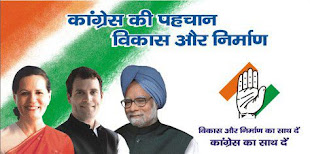Ashok Handoo
After its first quarterly review of the monetary policy in the current financial year, the Reserve Bank of India has raised the key interest rates once again. The rates have thus been raised for the 4th time in the current year.
The bank has raised the Repo rate by 25 basis points - that is quarter of one percent- to 5.75 percent. Similarly, the Reverse Repo rate has been raised by 50 basis points- that is half a percent- to 4.5 percent. Repo rate is the rate at which the RBI lends funds to commercial banks and the Reverse Repo rate is the rate at which it borrows from the commercial bank.
By raising both the rates, the net effect will be to reduce liquidity in the market since commercial banks will have to pay more for getting funds from the RBI. It also encourages banks to keep funds with the RBI and get better returns on it. Thus increase in benchmark rates will decrease infusion of cash into the system and also push up draining cash out of it. The purpose is to check the demand side pressures on inflation that has been in double digits for five consecutive months and a matter of concern for the government. In June the inflation rate stood at 10.55 percent.
The new rates are a declaration of intent to deal firmly with inflation and create a conducive atmosphere for sustained growth. The new rates are on the expected lines. Even before the RBI review took place, it was being speculated that the key rates would be increased by 25 basis points though the increase in Reverse Rate by half a percent may be a bit higher than expected. The fact that the RBI did not go for a steep rate hike underscores the fact that the Bank is pursuing its declared policy of calibrated increase in rates to ensure reduction of funds in the system without affecting the growth process. A big hike in interest rates could have affected the economic recovery as also the tight liquidity in the banking system.
By choosing not to touch the Cash Reserve Ratio, (CRR) that is the percentage of deposits the scheduled banks are required to keep with the RBI, the central bank has demonstrated its policy of least interference to let the economy fully recover from the effects of the global downturn in the past two years.
Economists generally believe that the latest modest increase in the key rates may not lead to increase in lending rates by banks since this much increase had been factored in by the banks as inevitable. Some do believe that it will affect, though marginally, the lending rates of the banks. The RBI has sent a clear signal that it wants both the deposit as well as lending rates to be increased to make credit expensive and at the same time improve the public deposits with the banks.
The RBI quarterly review has made two other significant observations. It has increased its growth rate target for the current financial year from 8 to 8.5 percent but at the same time raised the expected inflation rate from 5.5 to 6 percent by March 2011. The Finance Ministry expects to reduce inflation to 6 percent by December this year, counting on a good monsoon.
The present high inflation has been the outcome of a bad monsoon last year which led to drastic fall in the production of almost all agricultural commodities causing food inflation. Slowly, food inflation started seeping into other areas of the economy pushing up the wholesale price index there also and making the position critical.
The Reserve Bank says that inflationary pressures have exacerbated and become generalized with demand side pressures clearly visible. It says that given the spread and persistence of inflation, demand side inflationary pressures need to be contained.
Finance Minister Mr. Pranab Mukherjee is of the view that the RBI policy will lead to further easing of the inflation which already is coming down. He feels that it should also keep us fully on track in terms of growth, saying the monetary policy is another calibrated step in the right direction.
The fact however remains that the hike in interest rates can only curb the demand side inflation which is only a part of the problem. For an effective check on inflation we need to reduce the supply side pressures as well by increasing production, particularly of food grains. For that we depend a lot on the rain gods. In the long term, agriculture needs a closer look
It was in this context that the Prime Minister Dr. Manmohan Singh urged the state governments at the recent National Development Council meeting in New Delhi to pay more attention to the Agricultural sector for a meaningful check on inflation. Since Agriculture is a state subject, a big responsibility lies on the state governments to take care of this aspect. Though agriculture contributes only 18 to 20 percent to the GDP growth, it indeed plays an important role considering its spread across the country and involvement of over 65 percent of the country’s population with this activity.
Better attention to the agricultural sector and a calibrated exit from the loose monetary policy holds the key to containing inflation in the country. Supply side constraints need to be attended to more vigorously.
The RBI has now decided to undertake mid-quarter policy reviews as is done by the central Banks in other countries “to take the surprise element out of the off-cycle actions”. These reviews will be conducted after a month and a half of the quarterly review to enable the RBI to take mid- course corrective steps as per requirements. That should help the economy to take into account the prevailing situation and act accordingly.



























0 Comments